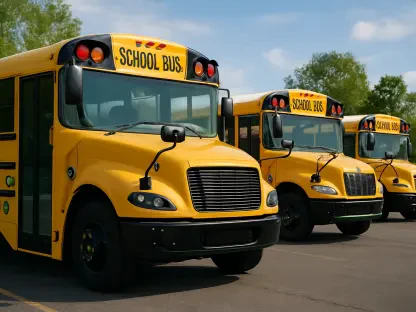In a startling turn of events that has left families scrambling for solutions, Highlander Charter School in Providence, Rhode Island, has announced the temporary closure of its elementary campus due to a union strike. This development, affecting over 630 students from Pre-K to grade 12, underscores a growing tension between the school administration and the union representing its educators, highlighting the challenges of balancing labor rights with educational stability.
Understanding the Closure Announcement
Roots of the Labor Dispute
At the heart of the closure lies a contentious labor dispute between Highlander Charter School and the International Brotherhood of Electrical Workers (IBEW Local 2323), which represents the elementary teachers and paraprofessionals. The school leadership revealed that the elementary campus would be shut down on Monday and Tuesday following the union’s decision to initiate what the administration calls an “unlawful strike.” Families were notified just days before the planned action, leaving little time to arrange alternative childcare or adjust work schedules. The administration has expressed deep frustration over this sudden disruption, emphasizing that the strike compromises the safety and stability of students due to insufficient staffing. This clash highlights a fundamental disagreement over priorities, with the school arguing that educational needs must come first, while the union’s actions suggest a push for better working conditions or compensation, though their specific grievances remain unclear in public statements.
Administrative Response to the Strike
The response from Highlander’s administration has been swift and critical, painting the strike as an irresponsible act that undermines the school’s mission. Superintendent Simona Simpson-Thomas has publicly condemned the move, describing it as an unnecessary interruption driven by external union interests rather than the welfare of students. The school has stressed that maintaining a safe and supportive environment is paramount, and the closure was a direct result of being unable to ensure adequate supervision during the strike. Furthermore, there is an ongoing willingness from the administration to return to the negotiation table, provided that discussions prioritize the needs of families and students. This stance reflects a broader concern about the long-term implications of such labor actions on the trust and reliability that families place in the institution, especially for those who depend on the school for meals and daily structure.
Broader Implications of the Strike
Legal and Professional Risks for Educators
Delving into the legal dimensions of this strike reveals significant risks for the educators involved. According to Highlander leadership and supported by the Rhode Island Department of Education, striking is deemed illegal for certified teachers in the state. Participation in this action could lead to severe consequences, including the potential loss of professional certifications and employment. The administration has voiced concern that the union’s approach may be exploiting educators by encouraging actions that could have lasting professional repercussions. This situation underscores the delicate balance between collective bargaining and adherence to state regulations, raising questions about how such conflicts can be resolved without jeopardizing the livelihoods of dedicated staff.
Impact on Families and Community Stability
The ripple effects of the closure extend far beyond the classroom, profoundly impacting families and the wider community. Many parents now face the daunting challenge of missing work or securing last-minute childcare, a burden that falls heaviest on those with limited resources. Highlander Board Chair Jonathan ‘Jock’ Hayes has called this disruption unacceptable, arguing that the community deserves better from both the school and the union. The school serves as a critical lifeline for many, providing not just education but also meals and a safe environment for children. When such a vital institution is forced to close, even temporarily, it destabilizes the daily lives of those who rely on it most. This scenario highlights a critical disconnect between the union’s objectives and the immediate needs of vulnerable families, prompting a broader discussion about how labor disputes in education can be managed to minimize harm to the community.
Evaluating Union Representation in Education
Another pressing issue arising from this strike is the suitability of IBEW Local 2323, traditionally a union for electrical workers, in representing educators within a Pre-K to grade 12 setting. School officials have openly questioned whether the union fully grasps the unique challenges and needs of students, families, and academic environments. They argue that the union’s demands, grounded in a trade-labor framework, do not align with the school’s budgetary constraints or operational realities. Hayes has framed this as a straightforward “math problem,” noting that agreeing to proposals beyond the school’s funding capacity is simply not feasible. This critique suggests a fundamental mismatch between the union’s approach and the educational context, raising concerns about whether such representation can effectively advocate for teachers without compromising the school’s core mission. The debate over appropriate union representation in charter schools is likely to persist as a key point of contention in future negotiations.
Reflecting on the Path Forward
Lessons Learned from the Disruption
Looking back, the temporary closure of Highlander Charter School’s elementary campus served as a stark reminder of the intricate interplay between labor rights and educational priorities. The administration’s frustration with what they deemed an unlawful and disruptive strike by IBEW Local 2323 underscored the profound challenges faced by all parties involved. Families bore the brunt of unexpected logistical hurdles, while educators risked their professional standing under the weight of legal constraints. The critique of the union’s fit for representing teachers in an academic setting added another layer of complexity to an already fraught situation. Reflecting on these events, it became evident that the closure was not merely a logistical issue but a symptom of deeper systemic tensions that demanded careful consideration and resolution.
Strategies for Future Resolution
Moving forward, finding a sustainable path to resolution will require innovative approaches and a renewed commitment to dialogue. Stakeholders must prioritize creating frameworks for negotiation that safeguard both educators’ rights and students’ needs, ensuring that future disputes do not result in similar disruptions. Collaborative efforts between school leadership and union representatives could focus on establishing clear guidelines for labor actions within the legal boundaries of Rhode Island law. Additionally, exploring alternative representation models that better align with the educational sector might mitigate misunderstandings and misaligned priorities. Investing in mediation and conflict resolution training for both parties could also foster a more constructive environment for addressing grievances. Ultimately, the goal should be to rebuild trust within the community, ensuring that Highlander Charter School remains a reliable pillar of support for its students and families while respecting the legitimate concerns of its dedicated staff.









